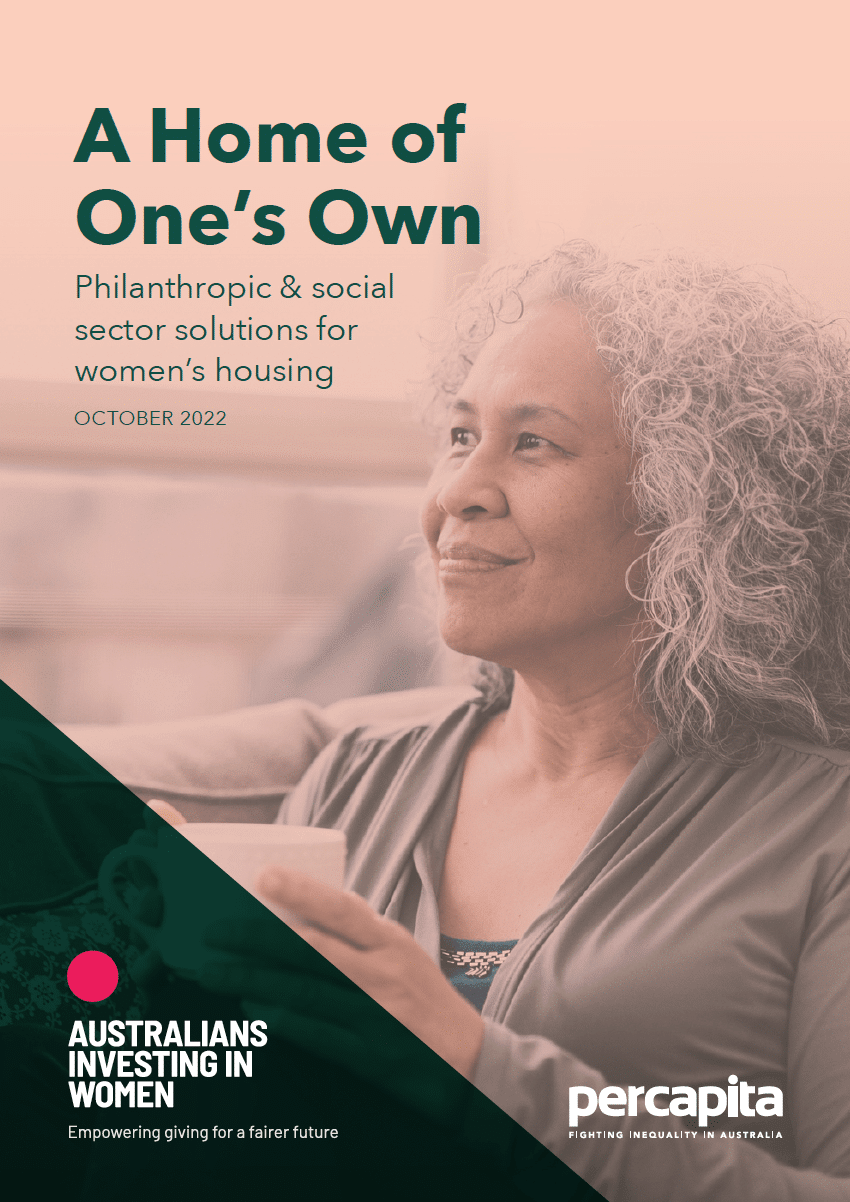Australia is experiencing a housing crisis, and its impact is highly gendered.
Soaring rents across the country are leaving too many people with nowhere to live. The Productivity Commission’s study of the National Housing and Homelessness Agreement, released last month, found that a significant majority of low-income households are living in rental stress, paying more than 30 per cent of their income on housing.
A recent episode of the ABC’s flagship current affairs program, 4Corners, showed the reality of the housing crisis facing people working in minimum wage jobs and those who rely in whole or in part on income support payments. In regional areas that previously provided affordable homes, rental properties are often impossible to find, and landlords are pushing up rents to reflect the tightening of the market and growing mortgage costs due to interest rate rises. Young families are living in tents.
This report applies a gender lens to the housing crisis. It finds that women and children escaping family violence, single mothers and older single women are most at risk of falling into homelessness due to a crisis in affordable housing that has been years in the making.
While census data suggests that homelessness is a bigger problem for men, we find that it is women who are at the forefront of this crisis. Women make up the majority of tenants in social housing and are by far the greatest users of Specialist Homelessness Services across the country.
Often finding themselves at risk of homelessness with children in tow, women manage the crisis differently to men, avoiding sleeping rough by staying temporarily with family and friends, accessing emergency shelter or, in desperate circumstances, sleeping in their cars. Their experience of homelessness and housing insecurity is thus largely hidden from statistics.
Yet family violence is the leading cause of homelessness in Australia, single mothers are the group most likely to experience significant and prolonged housing stress and women over the age of 55 are the fastest growing group of homeless Australians. Per Capita predicts that, without meaningful intervention, the number of older homeless women will more than double by 2031, to more than 15,000.
Women’s risk of homelessness is rooted in their lifetime experience of lower earnings due to interrupted careers, part-time work to accommodate caring and other domestic duties, and lower wages in sectors dominated by female workers, such as retail, hospitality and social care.
Social housing stocks have declined markedly over the past three decades, and now make up just 3 per cent of all residences, down from 6 per cent in the early 1990s. While state and federal governments have recently committed more funding to increase the social housing stocks, this alone won’t solve the crisis.
Australia needs a big investment to create a lot more secure, affordable housing for low-income people, especially women. This requires the private sector, led by institutional and social impact investors, developers, and philanthropists, to step up to the challenge.
This report sets out that challenge and proposes some solutions.

